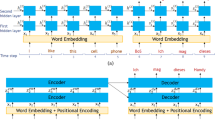Abstract
Utilizing the wavelet theory, the wavelet coefficients with respect to translation and scaling factors can be obtained through the iteration of neural network, which effectively solves the window immobility problem of short time Fourier transform. Notice that, the centralized wavelet neural network is weak in the representation of signal integrity as localized information is lost in the case of the signal properties are large span time-domain and high frequency. To solve this problem, the learning algorithm of distributed wavelet neural networks (DWNNs) based on domain segment is proposed in this paper, where the time frequency characteristic of objective function is set as a constraint condition, while the time width, frequency, center of time domain and band center of the wavelet are employed to determine the translation and scaling parameters. Especially, wavelet networks are distributed into several orthogonal subnet by partitioning the information of input data, and the complexity of calculating for each nodes is thus decreased. Moreover, simulations are presented to demonstrate the advantages and efficiency of the proposed DWNNs.







Similar content being viewed by others
References
Chrysos GG, Moschoglou S, Bouritsas G, Deng J, Panagakis Y, Zafeiriou SP (2021) Deep Polynomial Neural Networks. IEEE Trans Pattern Anal Mach Intell PP:1–1
Marelli DE, Fu M (2015) Distributed weighted least-squares estimation with fast convergence for large-scale systems. Automatica 51:27–39
Goodwin M, Yazidi A (2020) Distributed learning automata-based scheme for classification using novel pursuit scheme. Appl Intell (Dordrecht, Netherlands) 50(7):2222–2238
Song Y, Chen W, Dai H (2018) Fast convergent distributed cooperative learning algorithms over networks. Neurocomputing (Amsterdam) 275:2191–2199
Farina F, Melacci S, Garulli A, Giannitrapani A (2019;2020) Asynchronous distributed learning from constraints. IEEE Trans Neural Netw Learning Sys: 1–7
Wu X, Zhang J, Wang F (2019) Stability-based generalization analysis of distributed learning algorithms for big data. IEEE Trans Neural Netw Learning Sys 31(3):801–812
Chen CLP, Liu Z (2018) Broad learning system: an effective and efficient incremental learning system without the need for deep architecture. IEEE Trans Neural Netw Learning Sys 29(1):10–24
Liao Z, Pan H, Fan X, Zhang Y, Kuang L (2021) Multiple wavelet convolutional neural network for short-term load forecasting. IEEE Internet Of Things J 8(12):9730–9739
Graf R, Zhu S, Sivakumar B (2019) Forecasting river water temperature time series using a wavelet–neural network hybrid modelling approach. J Hydrology (Amsterdam) 578(C):124115
Fernndez C, Salinas L, Torres CE (2019) A meta extreme learning machine method for forecasting financial time series. Applied Intelligence (Dordrecht, Netherlands) 49(2):532–554
Masoumi M, Hamza AB (2017) Shape classification using spectral graph wavelets. Applied intelligence (Dordrecht Netherlands) 47(4):1256–1269
Zheng X, Tang YY, Zhou J (2019) A framework of adaptive multiscale wavelet decomposition for signals on undirected graphs. IEEE Trans Signal Process 67(7):1696–1711
Zhang F, Dong X, Yang B, Zhou Y, Ren K (2020) A systematic evaluation of wavelet-based attack framework on random delay countermeasures. IEEE Trans Inform Forensics Secur 15:1407–1422
Zhang Q, Benveniste A (1992) Wavelet networks. IEEE Trans Neural Netw 3(6):889–898
Huang W, Oh S, Pedrycz W (2017;2016) Fuzzy wavelet polynomial neural networks: analysis and design. IEEE Transactions on Fuzzy Systems 25(5):1329–1341
Tan K, Tseng T (2021) Seamless switching and grid reconnection of microgrid using petri recurrent wavelet fuzzy neural network. IEEE Trans Power Electronics, pp 1–1
Chen Q, Song Y, Zhao J (2020;2021) Short-term traffic flow prediction based on improved wavelet neural network. Neural Comput Appl 33(14):8181
Liu W, Cao S, Chen Y (2016) Seismic time-frequency analysis via empirical wavelet transform. IEEE Geosci Remote Sens Lett 13(1):28–32
Wang K, Su G, Liu L, Wang S (2020) Wavelet packet analysis for speaker-independent emotion recognition. Neurocomputing (Amsterdam) 398:257–264
Xie J, Chen W, Dai H (2019;2017) Distributed cooperative learning algorithms using wavelet neural network. Neural Comput Appl 31(4):1007–1021
Rondon R, Mahmood A, Grimaldi S, Gidlund M (2020) Understanding the performance of bluetooth mesh: reliability, delay, and scalability analysis. IEEE Int Things J 7(3):2089–2101
Men M, Zhong P, Wang Z, Lin Q (2020) Distributed learning for supervised multiview feature selection. Appl Intell (Dordrecht Netherlands) 50(9):2749–2769
Gao F, Chen W, Li Z, Li J, Xu B (2020) Neural network-based distributed cooperative learning control for multiagent systems via event-triggered communication. IEEE Trans Neural Netw Lear Sys 31(2):407–419
Zhang Z (2007) Learning algorithm of wavelet network based on sampling theory. Neurocomputing (Amsterdam) 71(1):244– 269
Shirani MR, Safi-Esfahani F (2020) BMDA: applying biogeography-based optimization algorithm and Mexican hat wavelet to improve dragonfly algorithm. Soft Computing (Berlin Germany) 24(21):15979–16004
Papoulis A, Maradudin AA (1963) The fourier integral and its applications. Phys Today 16(3):70–72
Yen GG, Lin K - (2000) Wavelet packet feature extraction for vibration monitoring. IEEE Trans Industr Electronics (1982) 47(3):650–667
Dinh TTA, Liu R, Zhang M, Chen G, BC Ooi, Wang J (2018) Untangling blockchain: a data processing view of blockchain systems. IEEE Trans Knowl Data Eng 30(7):1366–1385
Tianchi industrial steam forecast (2019) Online. Available: https://tianchi.aliyun.com/competition/entrance/231693/information
Acknowledgements
This work was supported in part by the National Natural Science Funds of China under Grant 61973277 and Grant 62073292 and in part by the Zhejiang Provincial Natural Science Foundation of China under Grant LR20F030004.
Author information
Authors and Affiliations
Corresponding author
Ethics declarations
Conflict of Interests
The authors declare that they have no conflict of interest.
Additional information
Publisher’s note
Springer Nature remains neutral with regard to jurisdictional claims in published maps and institutional affiliations.
Rights and permissions
About this article
Cite this article
Yang, W., Chen, B. & Yu, L. Distributed wavelet neural networks. Appl Intell 52, 8735–8745 (2022). https://doi.org/10.1007/s10489-021-02892-4
Accepted:
Published:
Issue Date:
DOI: https://doi.org/10.1007/s10489-021-02892-4




